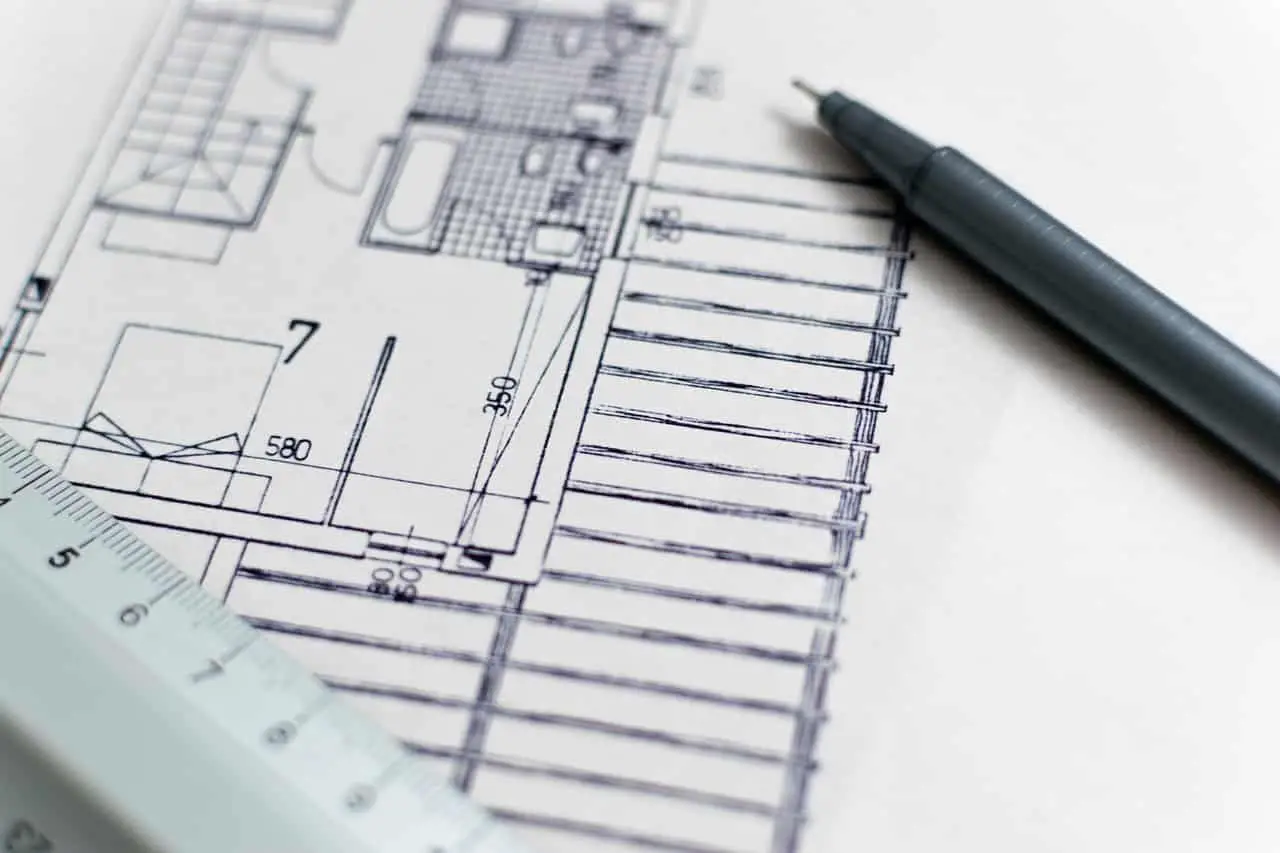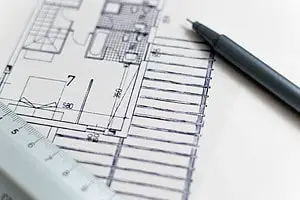In the world of architecture, building a strong portfolio is essential for success. A portfolio is a collection of an architect’s work that showcases their skills and abilities. It is a visual representation of their experience, education, and design style. A strong portfolio can help an architect stand out from the competition, attract potential clients or employers, and demonstrate their expertise in the field.
Architect school is the perfect place to start building a portfolio. As a student, you have the opportunity to experiment with different design styles, work on projects with varying degrees of complexity, and receive feedback from experienced professionals.
But building a portfolio is not just about collecting your best work. It requires careful selection, curation, and presentation to create a cohesive narrative that showcases your strengths and reflects your design philosophy.
In this article, we will explore the importance of building a strong portfolio and provide tips on how to create a portfolio that stands out in a competitive field.
Key Takeaways
- Building a strong portfolio is crucial for architects to showcase their skills and expertise.
- Creating a cohesive narrative and organizing the portfolio thoughtfully can guide the viewer through the architect’s work and showcase their strengths.
- Feedback from peers and industry professionals is essential for refining and improving the quality of the architect’s work.
- Regularly updating the portfolio with new, relevant work is crucial for showcasing growth and adaptability as a designer and increasing the chances of landing a job or project.
Understanding the Importance of a Strong Portfolio
A comprehensive understanding of the significance of a strong portfolio is fundamental to successfully establishing a career as an architect. An architect’s portfolio is a compilation of their best work, showcasing their skills, creativity, and innovation. It provides a glimpse into their design philosophy, technical abilities, and attention to detail.
A strong portfolio can make a significant impact on potential clients and employers, highlighting an architect’s ability to solve complex design problems, meet project requirements, and deliver high-quality results. A strong portfolio can act as a powerful marketing tool, helping architects demonstrate their unique strengths and capabilities to potential clients.
It can serve as a platform for architects to showcase their design skills, artistic vision, and technical expertise. A well-crafted portfolio can also help architects stand out in a highly competitive industry, providing a competitive edge in the job market. Ultimately, a strong portfolio can help architects establish their brand and reputation, positioning them for long-term success in the field.
Elements of a Great Portfolio
A great portfolio should be well-organized and have a clear layout that makes it easy to navigate.
High-quality images and drawings are also crucial in showcasing your work.
Moreover, incorporating a variety of project types and scales can help demonstrate your versatility and range as a designer.
These elements collectively contribute to a strong portfolio that can impress potential employers and clients.
Clear Organization and Layout
Effective organization and layout are critical components of a strong portfolio for an architect, as they not only showcase the individual’s skills but also highlight their ability to communicate complex ideas in a clear and concise manner. A well-organized portfolio not only makes it easier for the viewer to navigate through the work but also reflects the architect’s attention to detail and professionalism.
Here are three elements that contribute to a clear organization and layout of an architect’s portfolio:
-
Consistent formatting: The portfolio should have a consistent formatting throughout, including font, color scheme, and layout. This creates a cohesive presentation that is visually appealing and easy to follow.
-
Logical grouping: The work should be grouped together in a logical and coherent way, such as by project type or design stage. This allows the viewer to easily understand the architect’s approach and thought process.
-
Clear labeling: Each project or piece of work should be clearly labeled with a title, date, and brief description. This helps the viewer understand the context and significance of the work and demonstrates the architect’s ability to communicate effectively.
A well-organized and thoughtfully laid out portfolio is crucial for an architect to showcase their skills and communicate effectively. By incorporating consistent formatting, logical grouping, and clear labeling, an architect can create a portfolio that not only looks professional but also effectively communicates their approach and design thinking.
High-Quality Images and Drawings
The incorporation of high-quality images and drawings is vital in conveying the architect’s design vision and showcasing their technical abilities in a visually engaging manner. A portfolio that includes clear and well-executed images and drawings can make the difference between a potential employer or client taking a second look or passing over the architect’s work. The use of high-quality images and drawings can also help an architect to stand out in a competitive field, as it demonstrates a level of skill and attention to detail that is highly valued in the industry.
To ensure that the images and drawings in an architect’s portfolio are of the highest quality, it is important to use the right tools and techniques. For example, using a high-quality camera to capture images of the architect’s work can make a significant difference in the final result. Additionally, using software such as Adobe Photoshop or Illustrator can help to enhance the images and drawings, making them more visually appealing and easier to understand. By taking the time to invest in high-quality images and drawings, an architect can create a portfolio that effectively showcases their skills and expertise, making them a more attractive candidate to potential employers or clients.
| High-Quality Images and Drawings | |||||
|---|---|---|---|---|---|
| Importance | Conveys design vision and technical abilities | Makes architect’s work stand out | |||
| Tools | High-quality camera | Adobe Photoshop or Illustrator | |||
| Benefits | Enhances images and drawings | Creates a visually appealing portfolio | {finish the sentence} | Ultimately leads to more clients and job opportunities. |
Variety in Project Types and Scales
Diversifying the range of project types and scales showcased in a portfolio can demonstrate an architect’s versatility and adaptability in working with different clients and contexts. It also shows that the architect has a breadth of experience that can be applied to various design challenges.
A portfolio that only showcases projects of a similar type or scale can give the impression that the architect has limited experience and may not be able to handle different types of projects.
Including a variety of project types and scales in a portfolio can also highlight an architect’s ability to think creatively and problem-solve in different contexts. For example, a portfolio that includes both residential and commercial projects can show that the architect is capable of designing spaces for different purposes and users. Similarly, showcasing projects of different scales, such as a small addition to a home and a large-scale urban development, can demonstrate the architect’s ability to work with different budgets and project complexities.
Overall, a diverse portfolio can showcase an architect’s strengths, skills, and adaptability to potential clients and employers.
- A portfolio with only one type of project can give the impression of limited experience.
- Including both residential and commercial projects can show versatility in design.
- Showcasing projects of different scales can demonstrate the ability to work with different budgets and project complexities.
Choosing Your Best Work
Selecting your most impressive projects is crucial when assembling a portfolio that showcases your skills and abilities as an aspiring architect. Your portfolio needs to make a strong impression on potential employers or clients, and it is essential to present your best work in a clear and concise manner. This means carefully selecting projects that demonstrate your technical proficiency, creativity, and problem-solving skills.
To help you choose the most compelling projects for your portfolio, consider creating a table that lists your projects and evaluates them based on key criteria. In the first column, list the name of each project, and in the second column, include a brief description. In the remaining columns, evaluate each project based on factors such as the level of complexity, the scale of the project, your role in the project, the challenges you faced, and the outcome. This table will not only help you assess your projects objectively but will also allow you to compare them and decide which ones to include in your portfolio.
Creating a Cohesive Narrative
After carefully selecting the strongest pieces of work to include in your portfolio, the next step is to craft a cohesive narrative. A portfolio is not simply a collection of individual projects, but rather a representation of your design philosophy, process, and skills. Therefore, it is important to consider how each piece of work fits into the larger context of your design identity.
Creating a cohesive narrative involves identifying common themes or threads that run through your work. This could be a particular design aesthetic, a focus on sustainability, or an emphasis on user-centered design. By highlighting these connections, you can demonstrate to potential employers or clients that you have a clear vision and approach to design.
Additionally, organizing your portfolio in a thoughtful and intentional way can help guide the viewer through your work and showcase your strengths in a memorable and impactful way.
Incorporating Feedback
Incorporating feedback from peers and industry professionals is essential in refining and improving the overall quality of your design work. This process allows you to receive constructive criticism from those who have experience and expertise in the field, giving you the opportunity to learn and grow as a designer.
It is important to approach feedback with an open mind and a willingness to make changes, as this will ultimately help you to produce a stronger portfolio. When receiving feedback, it is important to take note of the specific points that are being made and to consider how these can be addressed in your work.
It can be helpful to ask for clarification if you are unsure about a particular comment, as this will allow you to better understand the feedback and make more informed decisions about how to proceed. It is also important to remember that feedback is not always going to be positive, and that it is okay to receive criticism.
The key is to use this criticism constructively, and to view it as an opportunity to improve your work. By incorporating feedback into your design process, you can create a stronger portfolio that showcases your skills and abilities as a designer.
Using Technology to Enhance Your Portfolio
Utilizing technology can significantly enhance the presentation and accessibility of your design work, allowing you to showcase your skills and creativity in a more dynamic and interactive manner. One of the easiest ways to incorporate technology into your portfolio is by creating an online platform to host your work. This can range from a simple website to a more complex digital portfolio that includes interactive features such as 3D models, videos, and virtual reality.
Here are some ways in which technology can enhance your portfolio:
-
Increased accessibility: By hosting your portfolio online, it becomes more accessible to potential clients and employers from all over the world.
-
Improved presentation: With the use of digital tools, you can create more visually appealing and engaging presentations of your work.
-
Interactive features: With the integration of 3D models, videos, and virtual reality, you can showcase your work in a more immersive and interactive manner.
-
Real-time updates: With an online platform, you can easily update your portfolio with new projects, ensuring that your work is always up-to-date and relevant.
Overall, utilizing technology in your portfolio can help you stand out in a crowded field and showcase your skills and creativity in a more dynamic and engaging manner.
Presenting Your Portfolio
Effectively presenting your work is crucial to impress potential clients and employers, and requires careful consideration of the format, layout, and content of your portfolio.
When presenting your portfolio, it is important to keep in mind that the purpose of your presentation is to showcase your skills, creativity, and expertise. Therefore, you should make sure that your portfolio is visually appealing, well-organized, and easy to navigate.
To achieve this, you should use a consistent layout and design throughout your portfolio, and include only your best work. It is also important to provide context for each project by including a brief description of the project goals, your role in the project, and the results achieved.
Additionally, you may want to include samples of your process work and sketches, as they can demonstrate your design thinking and problem-solving skills.
Overall, presenting your portfolio in a clear, concise, and engaging way can significantly increase your chances of landing a job or a project.
It is important to continually update your portfolio with new and relevant work to showcase your growth and versatility as a designer.
Continuing to Evolve Your Portfolio
Regularly updating your portfolio with new, relevant work is crucial for showcasing your growth and adaptability as a designer. The design industry is constantly changing and evolving, and it is important to demonstrate that you are keeping up with the latest trends and technologies.
By adding new projects to your portfolio, you are not only showing your ability to adapt, but also your willingness to learn and grow as a designer.
In addition to demonstrating your growth, updating your portfolio can also help to maintain the interest of potential clients and employers. Keeping your portfolio fresh and up-to-date can show that you are actively seeking new opportunities and taking on new challenges.
It also allows potential clients and employers to see a variety of your work and can help them to better understand your design style and capabilities. By continuing to evolve your portfolio, you are positioning yourself as a valuable asset to any design team or project.
Frequently Asked Questions
How do I know which projects to include in my portfolio?
When selecting projects to include in a portfolio, it is important to consider their relevance to the target audience. This involves understanding the expectations of potential employers or clients and tailoring the portfolio accordingly.
Projects that showcase a range of skills and techniques are generally preferred, as they demonstrate versatility and adaptability. It is also important to consider the level of complexity and scope of the project, as well as the quality of the final product.
A well-rounded portfolio should include a mix of both completed projects and works-in-progress, demonstrating the ability to manage multiple projects simultaneously. Ultimately, the aim is to present a cohesive and compelling body of work that showcases one’s skills, experience, and potential for future success.
Should I include personal projects in my portfolio?
When deciding which projects to include in a portfolio, it is important to consider the purpose of the portfolio and the target audience.
Personal projects can be valuable additions to a portfolio, but only if they demonstrate relevant skills and abilities.
The projects should be well-executed, clearly presented, and able to showcase the designer’s creativity and problem-solving abilities.
Including personal projects can also demonstrate a passion for the field and a willingness to go above and beyond what is required.
However, it is important to ensure that the personal projects do not dominate the portfolio, and that they are balanced with professional work and projects that are more closely related to the field of architecture.
Ultimately, the decision to include personal projects should be based on their relevance and ability to enhance the overall quality of the portfolio.
How many pieces should be included in a portfolio?
A portfolio is a showcase of an individual’s skills, experiences, and accomplishments. The number of pieces to be included in a portfolio is not fixed and can vary depending on the purpose and requirements of the portfolio. However, it is recommended to include a sufficient number of pieces that highlight one’s abilities and potential as a professional.
Typically, a portfolio should include a range of work that showcases different skills, styles, and techniques. The quality of the work is more important than the quantity. Therefore, it is essential to select the best pieces that demonstrate one’s expertise and creativity in the relevant field.
A well-curated portfolio can help individuals stand out and make a strong impression on potential employers or clients.
How do I incorporate feedback from others into my portfolio?
Incorporating feedback from others into a portfolio can be a valuable step in improving its overall quality. One way to do this is to seek feedback from professionals in the field, such as professors or practicing architects. It is important to listen carefully to their critiques and take their suggestions into consideration when making revisions to the portfolio.
Additionally, sharing the portfolio with peers or friends outside of the field can provide a fresh perspective and highlight areas that may need improvement for a more general audience. It is important to keep in mind the intended audience for the portfolio and tailor feedback accordingly.
Overall, incorporating feedback from others can lead to a stronger and more polished portfolio.
How often should I update my portfolio?
The frequency of updating one’s portfolio depends on various factors such as the type of work, the scope of the project, and the target audience. However, it is generally recommended to update one’s portfolio every six months to a year, or as new projects are completed.
Updating the portfolio helps to showcase one’s latest work, skills, and achievements, which can attract potential clients or employers. It also allows one to review and reflect on their previous work, identify areas for improvement, and refine their portfolio accordingly.
Regularly updating the portfolio not only demonstrates professionalism and a commitment to growth but also keeps it fresh, relevant, and engaging to the audience.
Conclusion
In conclusion, a strong portfolio is a crucial aspect of success in the field of architecture. It not only showcases your creativity, skills, and accomplishments but also tells a story about your design journey.
A great portfolio should include well-chosen works that demonstrate your technical abilities, design approach, and personal style. It should also have a well-defined narrative that helps the viewer understand your thought process and design philosophy.
Furthermore, incorporating feedback and using technology to enhance your portfolio can take it to the next level. Seeking feedback from peers, mentors, and industry professionals can help you improve your portfolio and make it more appealing to potential employers. Utilizing digital tools and platforms can also make your portfolio more interactive, engaging, and accessible.
Finally, it’s essential to keep evolving your portfolio as you progress in your career, adding new works and updating your story. By building and maintaining a strong portfolio, you can set yourself apart in a competitive industry and achieve your professional goals.









































































